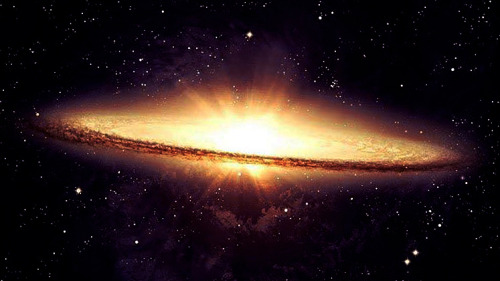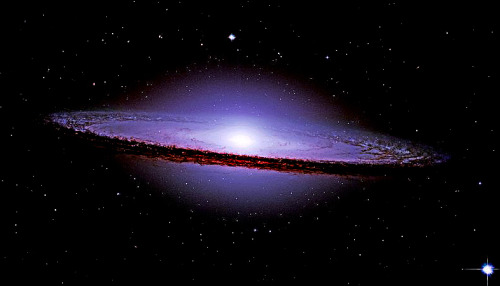Destination Earth. First Light On The Shore Of Lake Michigan In Racine, Wisconsin.

Destination Earth. First light on the shore of Lake Michigan in Racine, Wisconsin.
More Posts from Chbnb and Others

caress of light by Maria Franca Perra
Mathematician. Leader. Heroine. Remembering Hidden Figure Katherine Johnson
Tonight, count the stars and remember a trailblazer.

We’re saddened by the passing of celebrated #HiddenFigures mathematician Katherine Johnson. She passed away at 101 years old.

An America hero, Johnson’s legacy of excellence broke down racial and social barriers while helping get our space agency off the ground.

Once a “human computer”, she famously calculated the flight trajectory for Alan Shepard, the first American in space.

And when we began to use electronic computers for calculations, astronaut John Glenn said that he’d trust the computers only after Johnson personally checked the math.

As a girl, Katherine Johnson counted everything. As a mathematician, her calculations proved critical to our early successes in space travel.

With slide rules and pencils, Katherine Johnson’s brilliant mind helped launch our nation into space. No longer a Hidden Figure, her bravery and commitment to excellence leaves an eternal legacy for us all.
“We will always have STEM with us. Some things will drop out of the public eye and will go away, but there will always be science, engineering and technology. And there will always, always be mathematics.” - Katherine Johnson 1918 -2020
May she rest in peace, and may her powerful legacy inspire generations to come! What does Katherine Johnson’s legacy mean to you? Share in the comments.
Make sure to follow us on Tumblr for your regular dose of space: http://nasa.tumblr.com

Madeira | danielkordan

The Full Moon of 2021 via NASA https://ift.tt/3FWxNTm
Every Full Moon of 2021 shines in this year-spanning astrophoto project, a composite portrait of the familiar lunar nearside at each brightest lunar phase. Arranged by moonth, the year progresses in stripes beginning at the top. Taken with the same camera and lens the stripes are from Full Moon images all combined at the same pixel scale. The stripes still looked mismatched, but they show that the Full Moon’s angular size changes throughout the year depending on its distance from Kolkata, India, planet Earth. The calendar month, a full moon name, distance in kilometers, and angular size is indicated for each stripe. Angular size is given in minutes of arc corresponding to 1/60th of a degree. The largest Full Moon is near a perigee or closest approach in May. The smallest is near an apogee, the most distant Full Moon in December. Of course the full moons of May and November also slid into Earth’s shadow during 2021’s two lunar eclipses.
(Published January 01, 2022)

Morning mist by Esa Ylisuvanto || Website

Death Valley National Park by Jesse Graver




M104 Sombrero Galaxy

“If you cannot find peace within yourself, you will never find it anywhere else.”
-Marvin Gaye

Cepheus. Cosmic Zoo
-
 burntundertones liked this · 1 year ago
burntundertones liked this · 1 year ago -
 lordraziel liked this · 1 year ago
lordraziel liked this · 1 year ago -
 therealmoogler liked this · 1 year ago
therealmoogler liked this · 1 year ago -
 starminesister reblogged this · 1 year ago
starminesister reblogged this · 1 year ago -
 wonders7plus reblogged this · 1 year ago
wonders7plus reblogged this · 1 year ago -
 nahlicalti liked this · 1 year ago
nahlicalti liked this · 1 year ago -
 angeliquenoir58 liked this · 3 years ago
angeliquenoir58 liked this · 3 years ago -
 lichtensteining reblogged this · 3 years ago
lichtensteining reblogged this · 3 years ago -
 blurred-cat reblogged this · 3 years ago
blurred-cat reblogged this · 3 years ago -
 blurred-cat liked this · 3 years ago
blurred-cat liked this · 3 years ago -
 normandy55 liked this · 4 years ago
normandy55 liked this · 4 years ago -
 hypopapillon liked this · 4 years ago
hypopapillon liked this · 4 years ago -
 tracknumberse7en reblogged this · 4 years ago
tracknumberse7en reblogged this · 4 years ago -
 aneweira liked this · 4 years ago
aneweira liked this · 4 years ago -
 herr-bert liked this · 4 years ago
herr-bert liked this · 4 years ago -
 keychain-crap reblogged this · 4 years ago
keychain-crap reblogged this · 4 years ago -
 tinpigthinksbig liked this · 4 years ago
tinpigthinksbig liked this · 4 years ago -
 enchantingcolortacogarden liked this · 4 years ago
enchantingcolortacogarden liked this · 4 years ago -
 toasterrghost liked this · 4 years ago
toasterrghost liked this · 4 years ago -
 dariomarcollection reblogged this · 4 years ago
dariomarcollection reblogged this · 4 years ago -
 perfumes-of-love liked this · 4 years ago
perfumes-of-love liked this · 4 years ago -
 t-underneaththeradardancing liked this · 4 years ago
t-underneaththeradardancing liked this · 4 years ago -
 freelycaged liked this · 4 years ago
freelycaged liked this · 4 years ago -
 jmassino reblogged this · 4 years ago
jmassino reblogged this · 4 years ago -
 jamesmassino liked this · 4 years ago
jamesmassino liked this · 4 years ago -
 sapphic-minty-citrus reblogged this · 4 years ago
sapphic-minty-citrus reblogged this · 4 years ago -
 donjord liked this · 4 years ago
donjord liked this · 4 years ago -
 ask78kim liked this · 4 years ago
ask78kim liked this · 4 years ago -
 wanderlust-and-moonlight reblogged this · 4 years ago
wanderlust-and-moonlight reblogged this · 4 years ago -
 boss9214 reblogged this · 4 years ago
boss9214 reblogged this · 4 years ago -
 itsyveinthesky reblogged this · 4 years ago
itsyveinthesky reblogged this · 4 years ago -
 janpardo liked this · 4 years ago
janpardo liked this · 4 years ago -
 edgylitetm liked this · 4 years ago
edgylitetm liked this · 4 years ago -
 mandolinaes reblogged this · 4 years ago
mandolinaes reblogged this · 4 years ago -
 mandolinaes liked this · 4 years ago
mandolinaes liked this · 4 years ago

